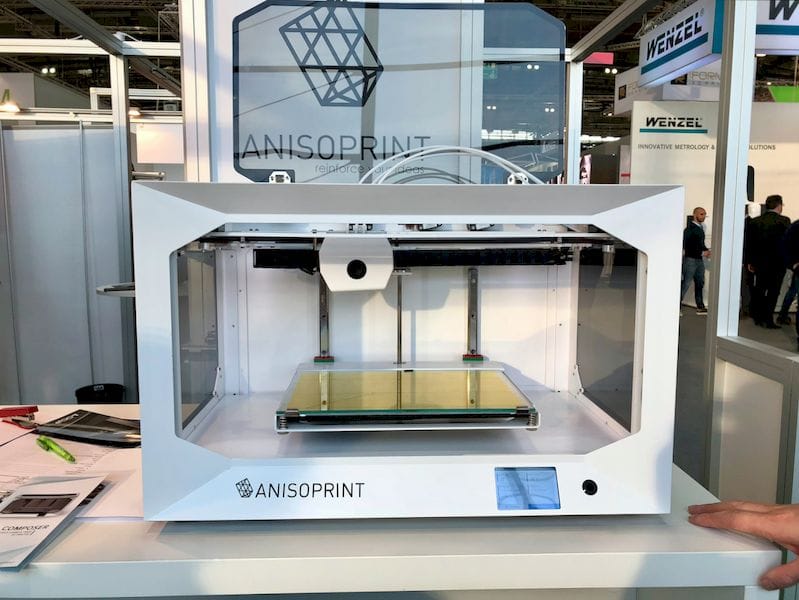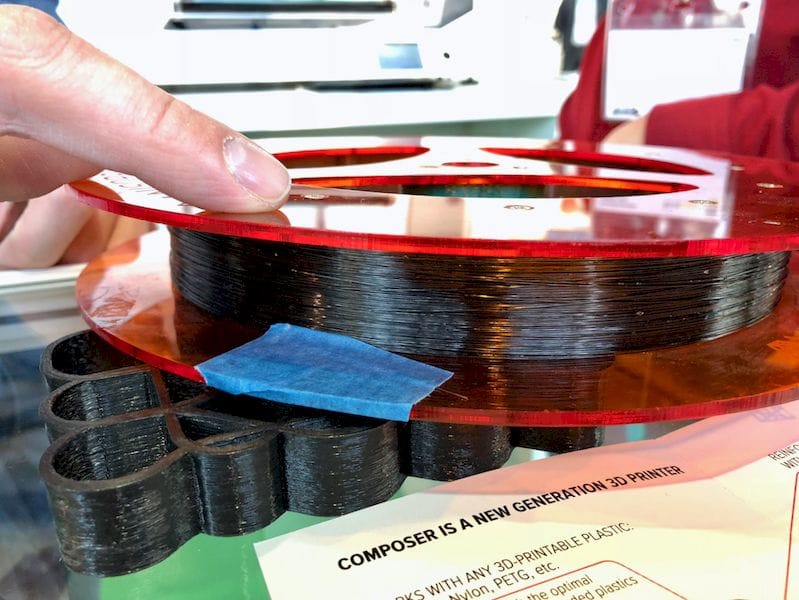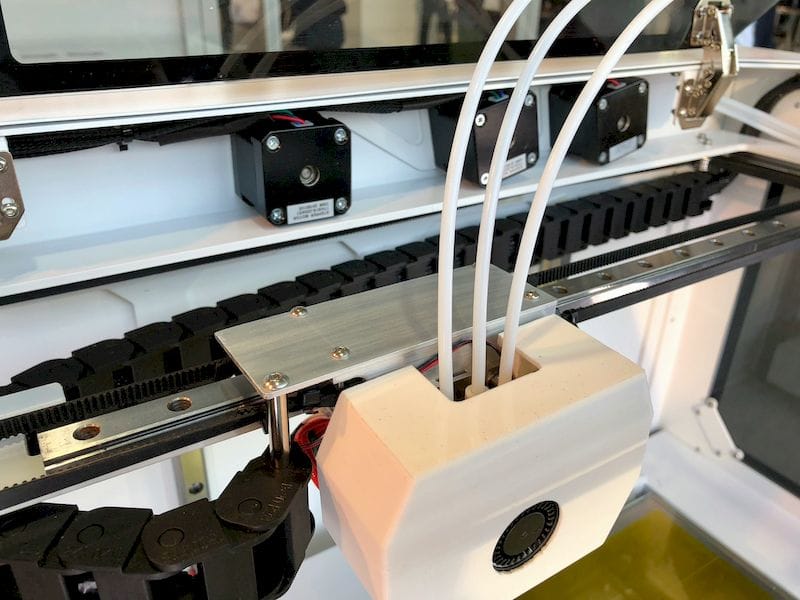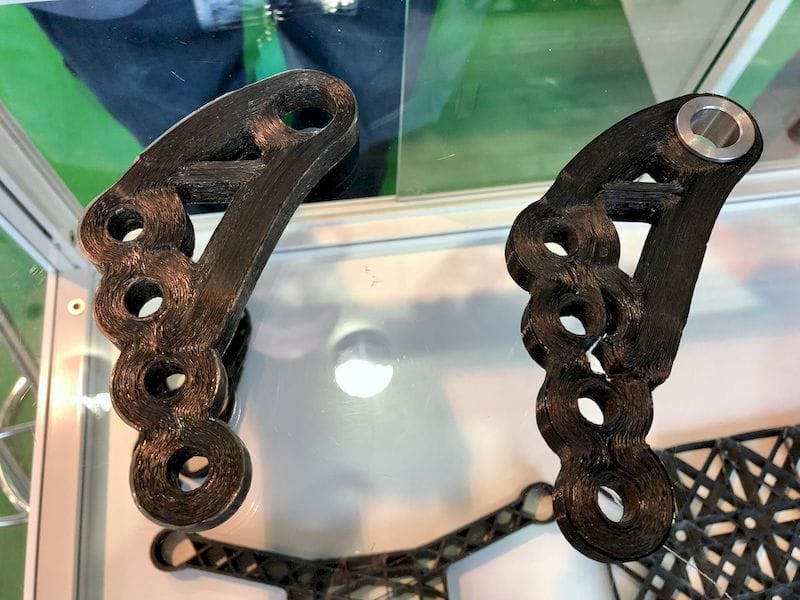
Anisoprint is a 2.5 year old 3D printer startup from Russia, who offer a true carbon fiber device.
By “true” carbon fiber, I mean that the carbon fiber is laid continuously within the print as it is normally done in non-3D printing applications. In most other 3D printing systems offering carbon fiber, the strong material is simply chopped up and mixed in with a polymer to form a somewhat stronger filament. While such approaches are indeed stronger, they are no match for actual, continuous, non-chopped carbon fiber.
Their ingenious tag line is “Reinforce Your Ideas”, and it’s literally true.

This capability has been offered by only a select few other 3D printer manufacturers, most notably Markforged, who made their name on the concept. But now Anisoprint offers an alternative.
Their “Composer” machine comes in three models, but the key to the machine is the combination extruder, which includes three extrusions. Two are the normal thermoplastic filament materials, and the third is for continuous carbon fiber, which they call “Composite Filament Co-extrusion (CFC)”.

Essentially this extruder spools out a strand of carbon fiber and chops it at the right moment to match the tool path.
On the thermoplastic side, however, the dual extruders are capable of handling the usual set of thermoplastic filaments, including PLA, ABS, Nylon, PC, etc, but Anisoprint recommends using PETG with the carbon fiber for best results.

The presence of the second extruder makes the machine more powerful as it can then print a dissolvable support material, enabling the printing of highly complex objects.
For now you can pre-order the machine at a cost of €4,900 (USD$5,800), which is apparently a 30% discount over the eventual pricing after launch. The company intends on using a network of resellers to market the equipment, so if you happen to be a reseller, you may want to give these folks a call.
And that’s not all. The company has grand plans for the future, including enabling very high temperature materials, as some other manufacturers have done, and even employing a 5 or 6 axis robotic system for more complex 3D printing.
Anisoprint’s key rival is obviously Markforged, but in recent times that company’s models have grown in size and capability, particularly in metal 3D printing. While they still market smaller desktop equipment, it must now compete with Anisoprint.
Competition is good; it will keep the pricing down and features up.
Via Anisoprint

